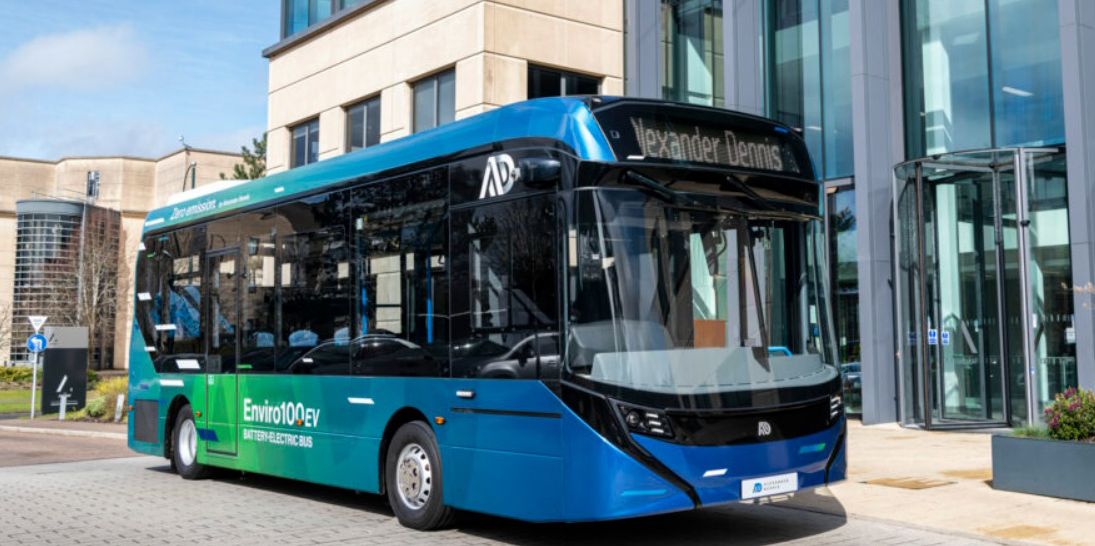
CAN THE MARKET SUPPORT BOTH ROBOTAXIS AND AUTONOMOUS BUSES?
- Bus maker Alexander Dennis joins Connector project consortium in Cambridge, UK, with plans to deliver three autonomous buses to the city in 2025.
- SAE Level 4 tech is being developed for mass transit applications by a number of companies, though testing on a city bus level remains largely confined to Europe and Asia.
- Smaller autonomous shuttles have been in the works in the US and Europe, as automakers look to ride-pooling to open up new revenue streams.
Depending on who's talking, robotaxis are either poised to take over more US cities in the coming months, or they're a problem-prone technology that's nowhere near being cost competitive compared to human-driven ride-hailing cars.
In the rush to a robotaxi utopia, relatively little attention has been paid to other forms of transport that are experimenting with SAE Level 4 technology, and could benefit from autonomous tech in the coming years. Most of the focus thus far has been on cars and small shuttles.
But in Europe, quite a bit of the focus on SAE Level 4 tech has included city buses, with testing in progress by a number of autonomous tech developers and bus makers. And they're electric as well.
Just how far along is this tech?
UK-based bus maker Alexander Dennis, which has been testing Level 4 buses for a couple of years now, recently revealed it will provide three Enviro100AEV electric autonomous buses for the Connector transit project in Cambridge, UK.
The bus manufacturer, which has already taken part in the CAVForth project in Scotland along with autonomous tech developer Fusion Processing Ltd., has joined a consortium that will launch autonomous bus service at the largest medical research center in Europe next year.
The buses will run from a Park & Ride site to two destinations in Cambridge.
"Our CAVStar Automated Drive System will provide the sensors, control modules, and software that will allow the project vehicles to drive autonomously on the Cambridge routes, showcasing a safe and efficient new type of public transport system," said Jim Hutchinson, CEO of Fusion Processing Ltd.
The company plans to complete the buses equipped with radar, lidar, and cameras, later this year for launch in 2025.
But the developers do not envision getting rid of human employees aboard all city buses, even though the Cambridge Connector project will rely on a private 5G network for real-time monitoring.
Rather, the company has been using "bus captains" as part of its testing along routes in Scotland, which were launched in the spring of 2023. The bus captains perform tasks analogous to those of train conductors, handling payments and assisting passengers, among other tasks.
So the potential for chaos or vandalism on board a driverless bus is actually lower than on buses with a driver, and it's one of the reasons cities could opt for autonomous buses in the coming years.
"For Cambridge to thrive now and in the future, the area needs the infrastructure and mass public transport systems to cope with the demand—autonomous vehicles are one part of this solution," said Councilor Elisa Meschini, Chair of the Greater Cambridge Partnership’s Executive Board.
Incidentally, onboard safety for Level 4 shuttles is not something that has been tested in the US to date, even as a number of developers have revealed prototypes of small, driverless shuttles that can carry anywhere from four to a dozen passengers.
Surveillance tech will certainly be part of such shuttles, at least on the investigative end of potential safety incidents, but real-time onboard safety won't include human employees.
The autonomous car vs. autonomous bus divide is, in some ways, a reflection of the North American and European transit priorities, with far more money and testing being spent stateside on individual vehicles, with their potential for higher per-trip fares than buses. After all: Bus tickets usually don't cost $20 for a 20-minute ride.
Europe certainly isn't sleeping on robotaxi expansion, but developers across the Atlantic are still keen to extend some of the potential of autonomous tech to mass transit.
Will we see driverless Level 4 buses in the US in coming years, or will most of the focus be on private and company-owned passenger cars? Let us know what you think in the comments below.
Looking to purchase a car? Find your match on the MSN Autos Marketplace 2024-07-03T16:20:30Z dg43tfdfdgfd